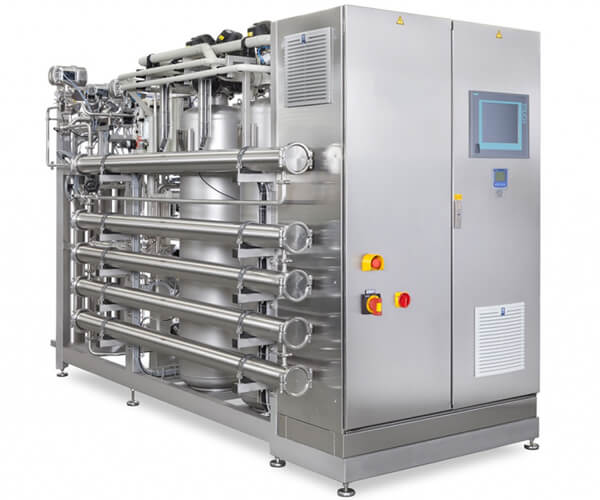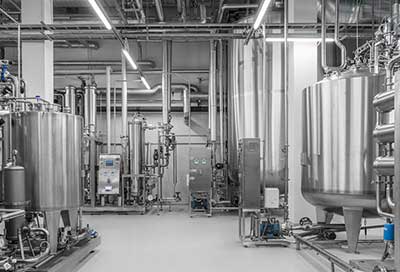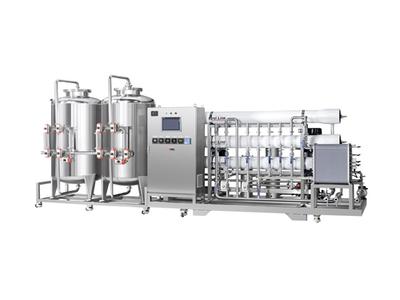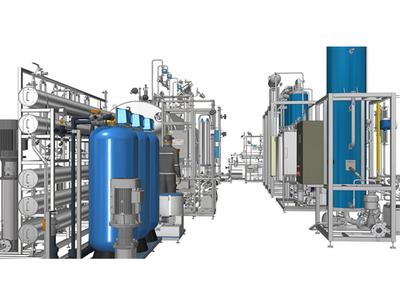The purified water storage and distribution system plays a crucial role in pharmaceutical production. It is an essential component in industries such as biochemistry, biopharmaceuticals, and food processing, acting as a key link in the process system.
Typically, the purified water storage and distribution system is located within clean rooms. The purified water distribution system serves cleaning machines, injection water systems, pure steam generation systems, and other applications. The system is primarily composed of pipelines, valves, storage tanks, sanitary pumps, circulation loops, online instruments, and automation systems.During operation, the system uses chilled water at 6-12°C, which is circulated through a double-tube heat exchanger to keep the purified water temperature below 25°C. For pasteurization of the purified water storage and distribution system, steam at 3 bar(g) is used to heat the double-tube heat exchanger, raising the purified water temperature above 80°C within 2 hours.
After pasteurization, compressed air is used to purge the heat exchanger's shell-side piping, cooling the heat exchanger, and chilled water at 6-12°C is again circulated through the double-tube heat exchanger to bring the purified water temperature down to ambient temperature. The purified water distribution system uses sanitary centrifugal pumps to transport purified water to various users and return it to the storage tank.Throughout the entire loop, online monitoring is conducted for water pressure, TOC (Total Organic Carbon), conductivity, temperature, and flow rate. If the TOC or conductivity measurements are out of specification, non-compliant purified water is discharged from the system through control valves. The flow rate is controlled by sensors, and the sanitary centrifugal pump speed is adjusted to ensure that the purified water velocity at the end of the loop is always greater than 1 m/s.

Surface Smoothness
The inner wall of the pipeline should be easy to clean, as rough surfaces can promote microbial growth, increasing the risk of contamination. Mechanical welding is preferred, and the number of welds should be minimized.
Dead Zone Liquid Bags
In pharmaceutical engineering design, the presence of dead zones can lead to microbial growth, forming biofilms that contaminate the purified water system. Therefore, dead zones should be avoided in the purified water storage and distribution system.
Tank Size
The selection principle for tank volume is that a smaller tank should meet the maximum process water demand. If the water production from the system exceeds the process water demand, the excess water is stored in the tank for future use, with the maximum volume required for storing the surplus water referred to as V1. If the process water demand exceeds the water production, the tank provides the water deficiency, and the maximum volume required for this is referred to as V2. Therefore, the minimum storage tank volume required for purified water is V1 + V2.
Tank Type
In the purified water storage and distribution system, tanks are divided into vertical and horizontal types. In most cases, vertical tanks are preferred because they have a higher minimum liquid level, making the design of the distribution system more convenient.


